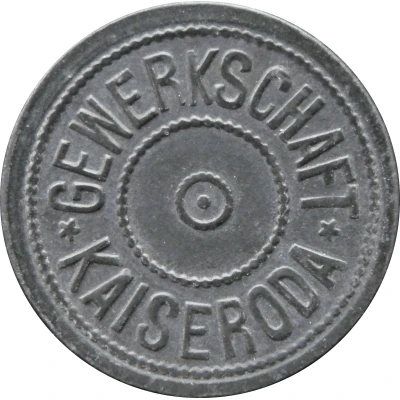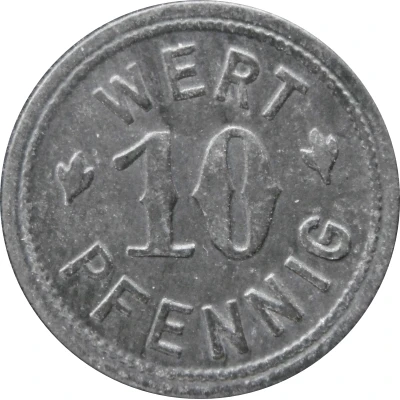


© polisciprof (CC0)
10 Pfennigs - Kaiseroda (Gewerkschaft) ND
| Zinc | 2.4 g | 20.4 mm |
| Issuer | Municipality of Kaiseroda (Saxe-Weimar-Eisenach) (Federal state of Saxe-Weimar-Eisenach) |
|---|---|
| Type | Standard circulation coin |
| Value | 10 Pfennigs (10 Pfennige) (0.10) |
| Currency | Mark (1914-1924) |
| Composition | Zinc |
| Weight | 2.4 g |
| Diameter | 20.4 mm |
| Thickness | 1.3 mm |
| Shape | Round |
| Technique | Milled |
| Orientation | Medal alignment ↑↑ |
| Demonetized | Yes |
| Updated | 2024-10-04 |
| Numista | N#158452 |
|---|---|
| Rarity index | 87% |
Reverse
Script: Latin
Lettering:
WERT
10
PFENNIG
Edge
Plain
Comment
(Menzel: BBB)Kaiseroda was a salt mine in Germany.
Gewerkschaft is German for labor union.
Interesting fact
One interesting fact about this coin is that it was issued by a municipality in what is now Germany, specifically the Municipality of Kaiseroda in the state of Saxe-Weimar-Eisenach, during a time when local currencies were still prevalent in Germany. This coin, made of zinc and weighing 2.4 grams, was part of a larger system of local currencies that were used alongside the official German currency, the Mark. The use of local currencies like the 10 Pfennigs coin from Kaiseroda was a common practice in Germany during the late 19th and early 20th centuries, and it allowed municipalities to issue their own currency for local use. This practice was eventually phased out as the German government began to centralize its currency system and introduce the Mark as the standard currency for the entire country.